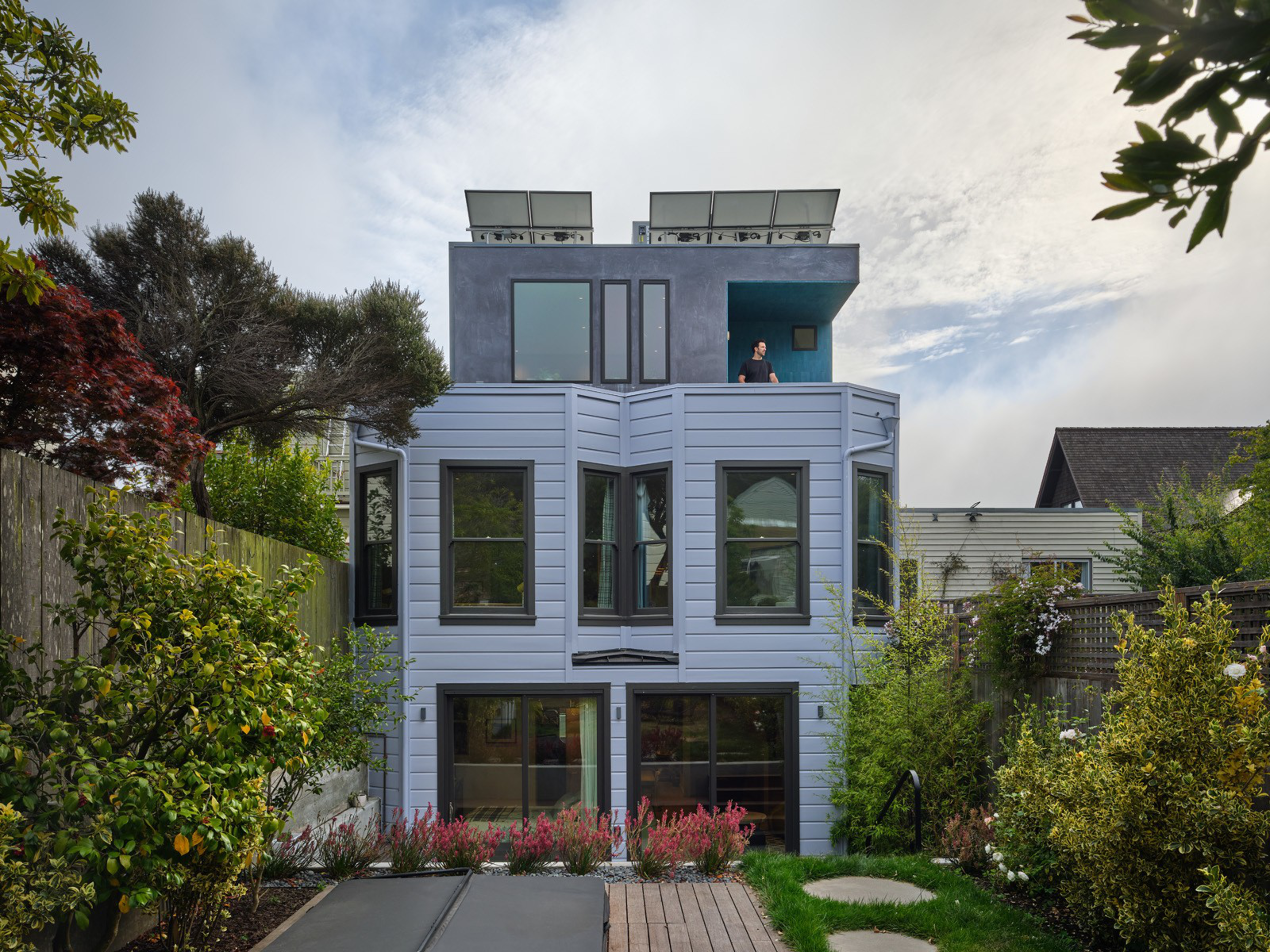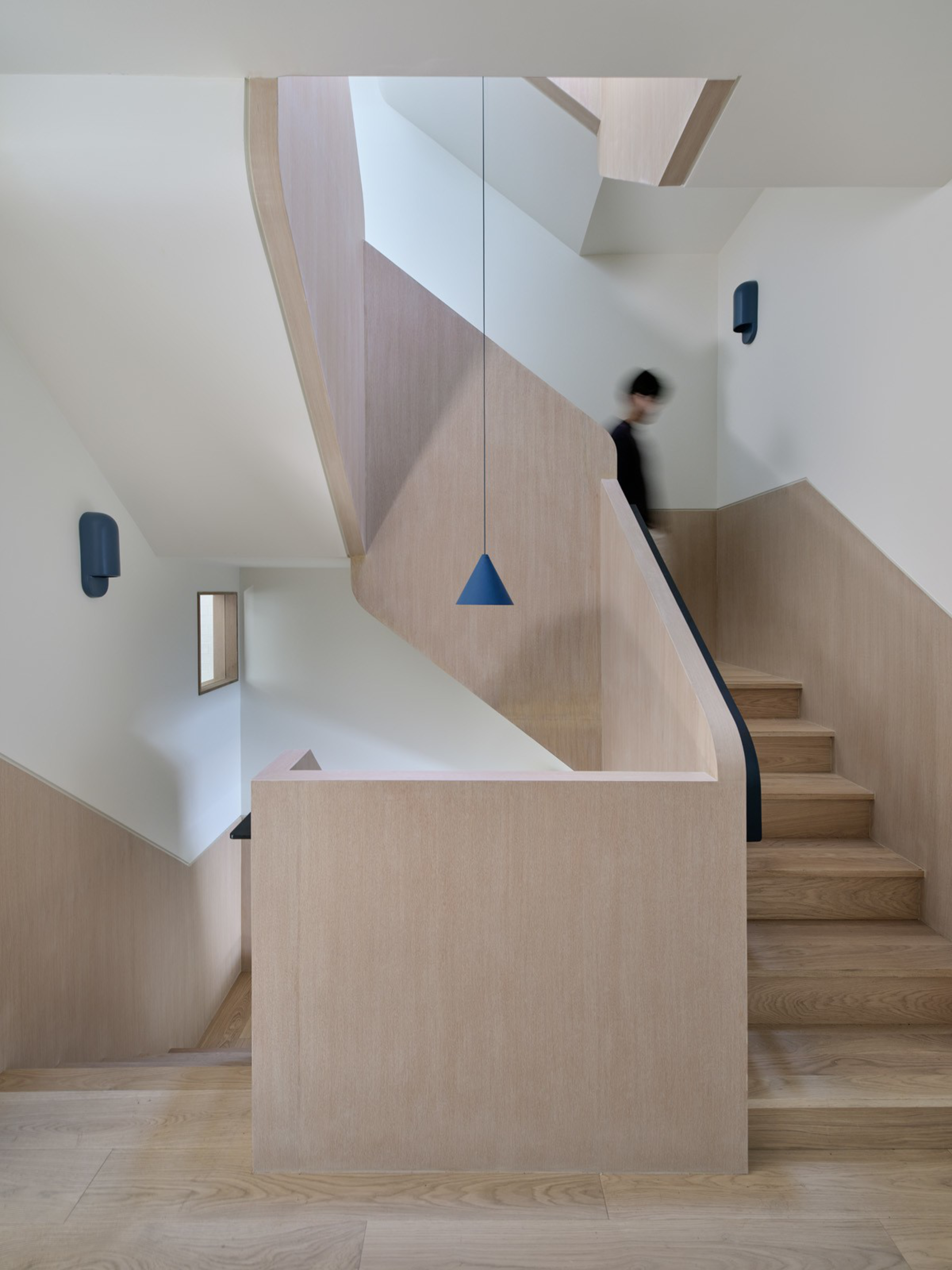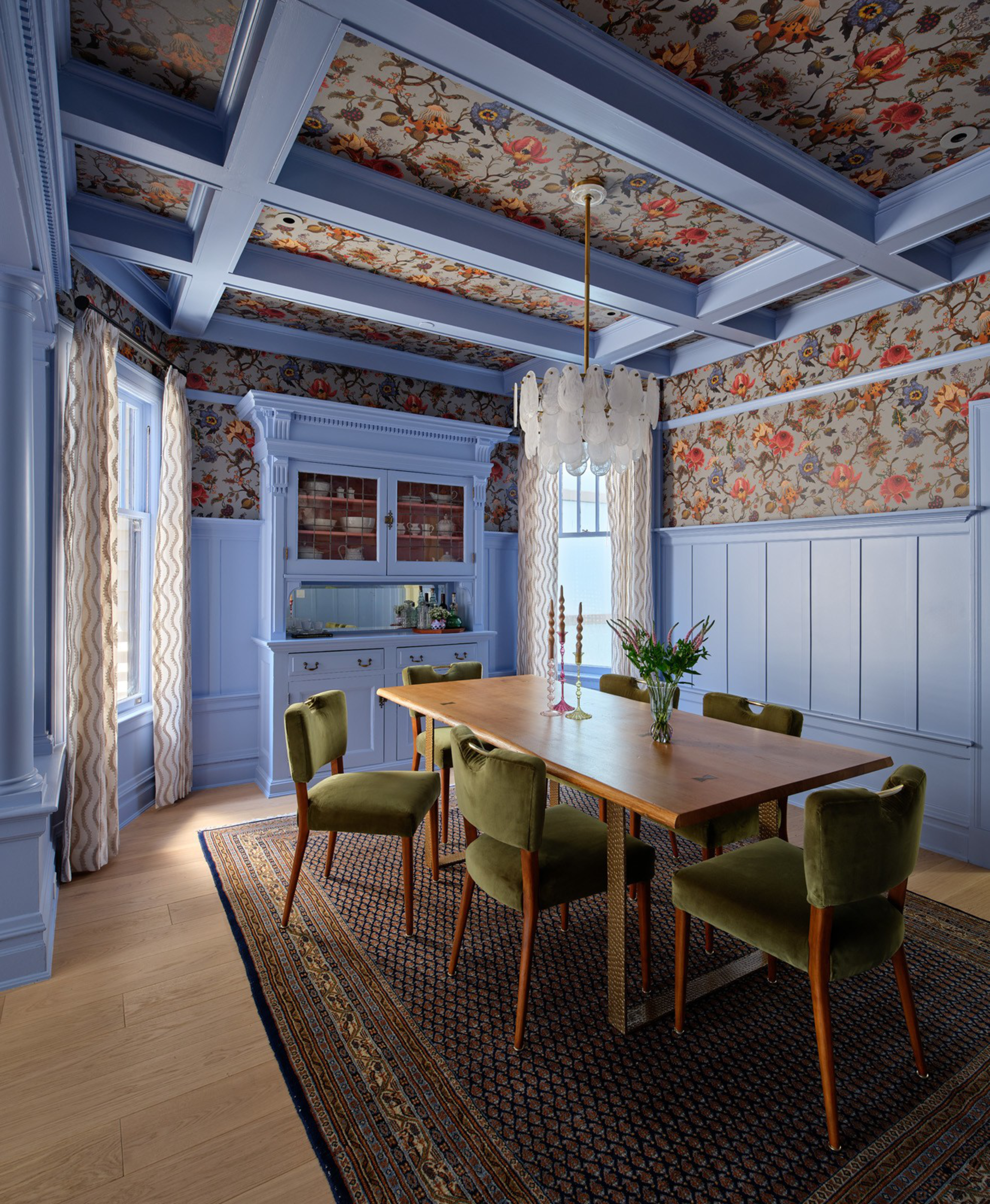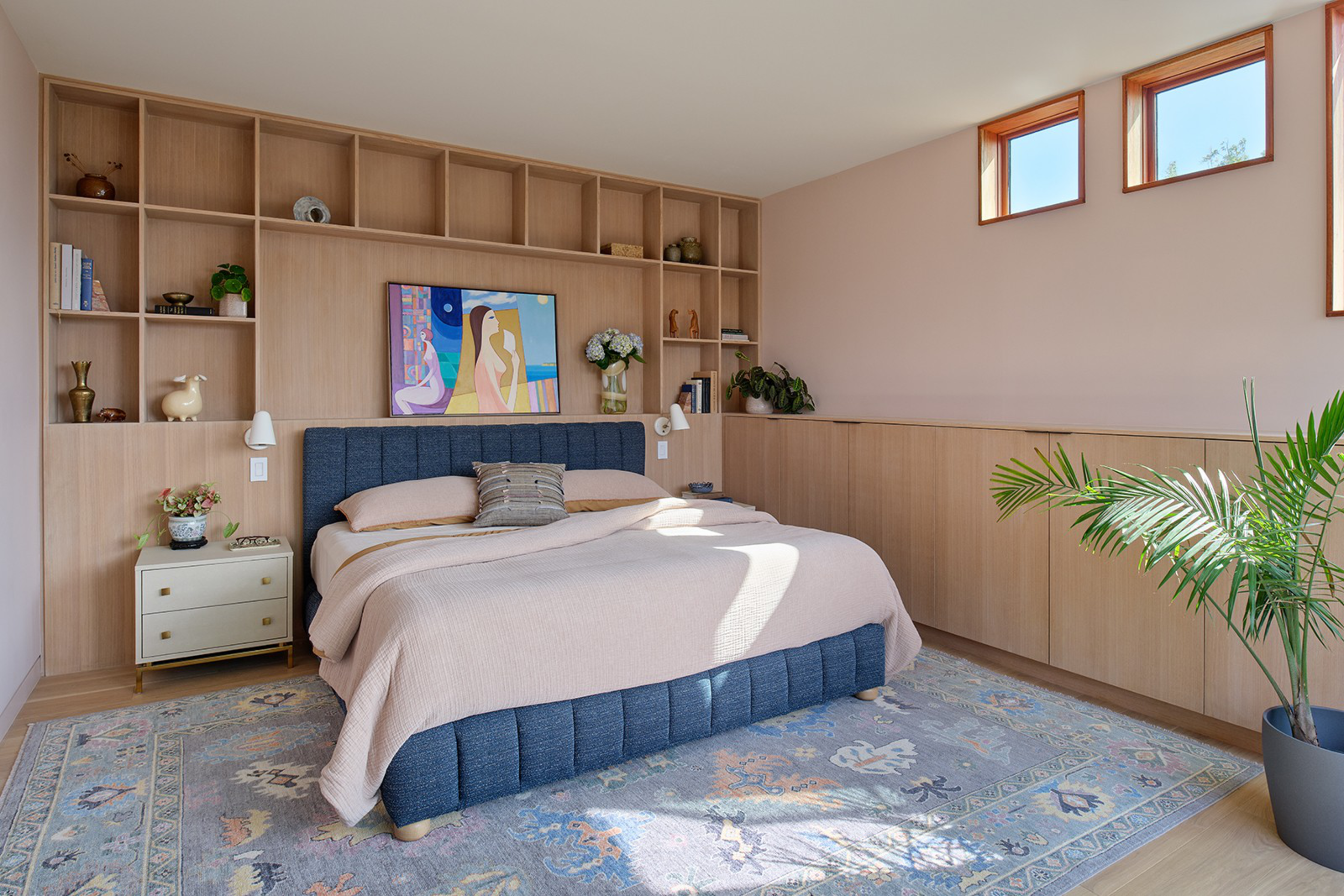Welcome to The Looker, a column about design and style from San Francisco Standard editor-at-large Erin Feher.
The San Francisco residential real estate market isn’t kind to perfectionists. When you compete with strangers who presumably have more money than you, hasty decisions get made. Foundations aren’t always examined closely; ceiling heights aren’t always measured twice.
Such was the case with a 115-year-old Edwardian perched on the southwest slope below Buena Vista Park. When longtime Upper Haight residents Sarah and Robert (who declined to share their last name) were house hunting in 2019, their list of priorities was short and sweet: outdoor space, a bedroom for each of their two kids, and a location within walking distance of their beloved library and public school, Grattan Elementary.


They had already lost one Ashbury Heights house to a higher bidder, so when the Edwardian popped up, they were susceptible to a bit of magical thinking. There were three advertised bedrooms, but one was wedged into a clunky rooftop addition accessed via a set of perilous, code-defying stairs. During the open house, the basement was staged with a bed, and the couple envisioned making it their serene primary bedroom.
“You talk yourself into a lot of things,” Robert recalls. “Like, there’s this weird downstairs room that’s disconnected from the house, has 71/2-foot ceilings, no heat, and is very permeable to rodents — we could totally make this into our bedroom, right?”
Once the place was theirs and they’d moved in, Robert kept knocking his forehead on his way to the basement, and they realized there was no possible way to fit a bed up the narrow stairwell to the attic. So the family squeezed into the two original bedrooms on the main floor and optimistically bought a pair of twin beds topped with tents as a novel privacy solution for the kids, who were 3 and 6 at the time.
It was fun, until it wasn’t.
Luckily, they had friends with creative ideas. Robert grew up in Menlo Park with architect Dan Spiegel of Spiegel Aihara Workshop (opens in new tab), or SAW. When the couple decided the tent beds weren’t going to cut it, Spiegel was the first person they called.
Spiegel and his wife and partner, the landscape architect Megumi Aihara, are cerebral designers with a playful streak. The duo met while in grad school at Harvard University and bounced between SAW’s buzzing studio in the Dogpatch and the California College of the Arts, where they both teach. Their portfolio is stacked with modern buildings with corners, rooflines, and windows that are gloriously askew.


While SAW’s designs are sleek showstoppers, they are also ingenious solutions to puzzles of site and space. And Sarah and Robert had a doozy of a jigsaw: They needed to create significantly more usable square footage in a century-old house set on a steep hillside and built wall-to-wall with its neighbors.
Plus, the family was committed to retaining as much of the original detailing as possible, from the brick-lined mantle to the box-beam dining room ceiling and built-in sideboards. The kids had even fallen in love with the bird-bedecked wallpaper in the powder room.
So Spiegel got to work on an ambitious remodel, carefully working around the beloved elements. He needed to work up, down, and back, while leaving the entry and street-facing double parlor virtually untouched. Then he had to connect the old and new spaces in a way that made sense and still allowed natural light to travel from a few precious skylights into the heart of the house.
The solution came in a jaw-dropping form: a four-story corkscrew staircase that connects old spaces with new and allows fractional shafts of light to permeate each floor.
“We wanted it to be this big moment in the house that brought light down from the roof deck and also allowed you to have a centralized area of interaction, a place where people bump into each other,” Spiegel says. The cascading stair is wrapped in oak, and a three-piece pendant light is suspended down its center. With this sturdy spine in place, each level of the house was able to unfurl.


The lowest level was excavated — revealing a fast and loose foundation that needed shoring up — to create a cluster of usable rooms with high ceilings and easy access to the backyard. The lower floor now features a lounge for the kids, complete with a TV and foosball table, a guestroom with bathroom, a music studio, and a laundry room. Sunlight from nearly 50 feet above dapples the landing of the stair.
On the main level, the stair spits out to the kids’ respective bedrooms to the rear and the spacious kitchen to the front. A kitchen skylight from the old design still shoots light onto the island, thanks to another ingenious aperture. A smaller chute runs parallel to the stairwell. Its walls are made of perforated metal in a pattern that mimics the geometry of the stair rail. In a similar vein, it transports light from the rooftop skylight through the house, punching through the top-floor walk-in closet and hallway and ending at the square of the original kitchen skylight — like a chimney for light.
“When I realized we were building on top of the kitchen, I asked Dan, ‘How do we save this skylight in the kitchen, because I love having light here?’ Sarah says. “And he was like, ‘Oh, we just make a tunnel.’”

The expanded top level now houses the primary bedroom, the aforementioned his-and -hers walk-in closet, a bathroom, and an office. But to ensure this floor is used by all, Spiegel designed a cozy, quirky reading nook created by a waterfall of bookcases, each large enough for someone to perch on.
“The reading nook just kind of splays out to create these different territories. It’s all of our kids’ favorite place to hang out,” says Speigel, who, with Aihara, has two kids of similar ages who helped break in the new designs during long, convivial dinner parties.
In addition to the generous skylights, several decks pop off from the indoor rooms, and the stair continues up yet another level to a new loungey roof deck set with Galanter & Jones heated furniture and ringed with a succulent-studded living roof designed by Aihara. “It’s the perfect place to watch the fog roll in,” Sarah says.


The modern additions blend seamlessly with the original architecture — Spiegel repeated a quarter-round curve (essentially a square with one corner rounded off) throughout the house as an homage to the original moldings and trims and to inspire a smooth transition from one room — and one era — to the next. But once the shiny new areas of the house began taking shape, the reality set in that the original rooms would need a fresh gloss to fit in.
Sarah had spotted the colorful, pattern-rich rooms of Oakland-based designer Melanie Love (opens in new tab)on Instagram and felt an immediate attraction. “I knew I didn’t want a house that was all beige and white,” she says.


During one of their first meetings, Love arrived with nearly 20 wallpaper samples. She uses wallpaper as something of an aesthetic palm reading, helping her to understand her client. “We might come with two options for a dining table, but we always bring a couple dozen wallpaper options just to really get a read of the client,” says Love, who is originally from Georgia and has a reverence for old houses with decadent interiors.
Once the architecture was nearing completion, Love swept through the house with a bold but cohesive palette of color, pattern, and texture. She coated the original moldings, wainscotting, and brick hearth in periwinkle blue. The ceilings, entry, and living room were painted a rich plum. The dining room was wrapped, walls and ceiling, in floral House of Hackney wallpaper. The blues continue in various hues in the kitchen and pop up throughout the house in winking ways.

“This was a new challenge for me: How do we respect the work of the architect, and complement that work, while also respecting the history of the house?” says Love. “Our goal was to bridge that gap.”
Sarah, Robert, and the kids are emphatic that all goals were exceeded. And as for the couple’s original wishlist, it has been solidly checked off.
On a recent weekday, the kids tumbled into the house with friends in tow — the quick 15-minute walk from school, plus the numerous options for hangouts makes the house a magnet for the neighborhood kids. The public library — the Park Branch — is just a few blocks in the other direction. Robert mentions that they had just received a notification that, as a family, they had checked out 12,000 books so far this year.
For this city family, a little magical thinking turned into a dream come true.

